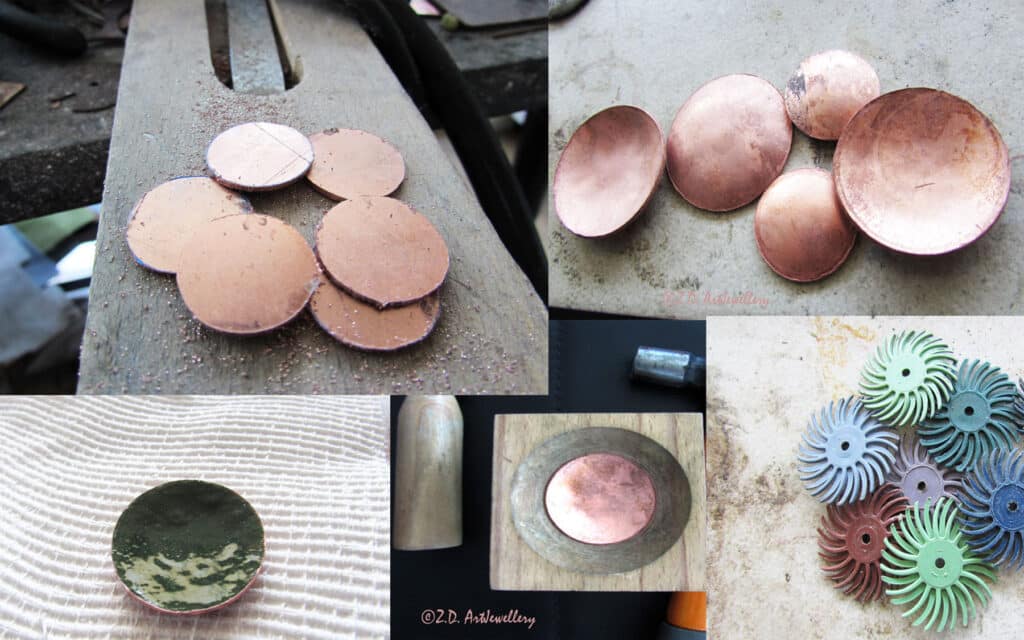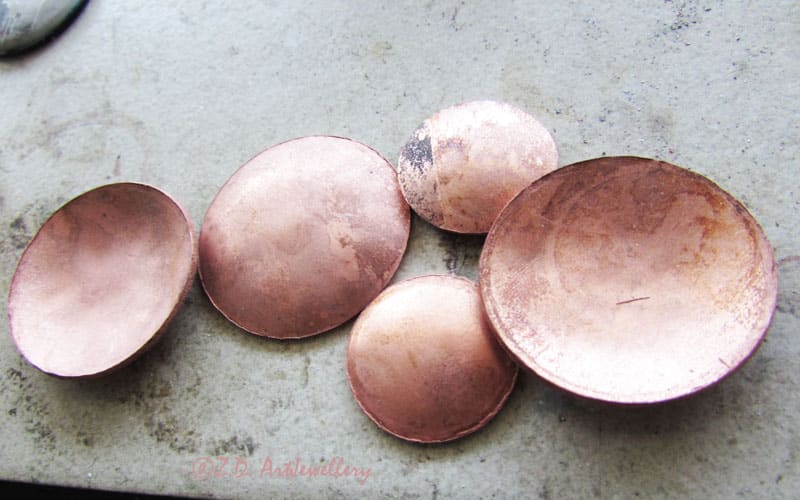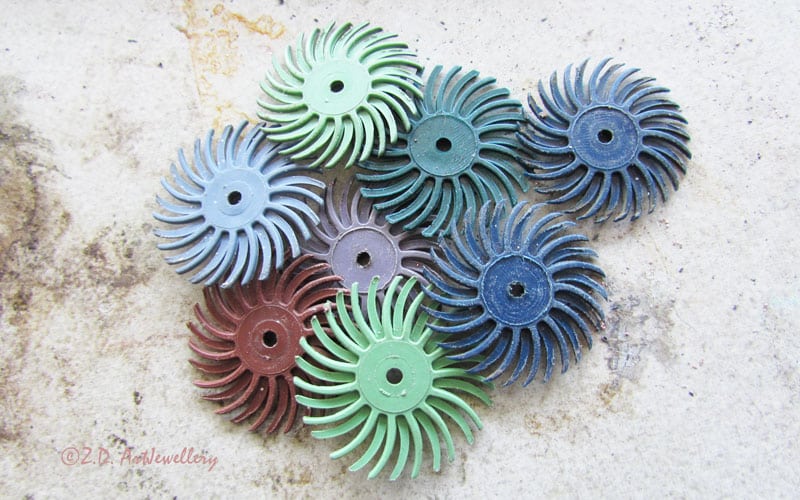

In this post, I write about preparing copper for enamelling from cutting the blank to counter enamelling in detail.
Frequently used metals for enamelling are silver, copper and gold due to their high melting temperature. Some artists have tried brass successfully too, but I have not tried it. The other metal that can be used for enamelling is steel with low carbon percentage. In this post, I focus on copper and write about preparing copper for enamelling. I have a short video that I am showing the following steps in preapring metal for enamelling
If you follow enamellists’ works, you might notice that circular shapes are the most popular compared to square or irregular shapes. One reason is that you can dome them easily using doming block! So, the reason behind doming is to prevent warpage during enamelling. Warpage occurs during enamelling due to different thermal expansions of enamel with that of metal. There are ways to avoid warpage that are mainly doming and counter-enamelling (enamelling the back of piece)

Anneal your blank and then shape and dome it the way you wish. To dome round blanks, use doming block. The best way to dome other shapes in a regular and nice way is using a hydraulic press. If you want to drill a hole in your blank, it is better to do it before doming.


To clean the piece after annealing, I put it in pickle to remove fire scale and then polish it. I usually use 3M Radial polishing Discs that are quite versatile and useful. But if you don’t have a flex shaft tool, use sanding paper.

After cleaning, I counter enamel the piece and use any enamel I have. You can wet pack (what I show in video) or sift the enamel. The only factor you need to consider is to not use soft-fusing enamel. Use medium- or hard-fusing enamel. These enamels are fired at higher temperatures or longer time than the soft-fusing enamels. This is important as some enamel pieces should be fired many times and counter enamel should be durable and maintain their cover during these firings. It is better to at least apply two layers of enamel to the back side. You can under-fire counter enamel layers. I usually do!

After counter enamelling and of course cleaning, your blank is ready for enamelling
We use cookies to improve your experience on our site. By using our site, you consent to cookies.
Manage your cookie preferences below:
Essential cookies enable basic functions and are necessary for the proper function of the website.
These cookies are needed for adding comments on this website.
Stripe is a payment processing platform that enables businesses to accept online payments securely and efficiently.
Service URL: stripe.com (opens in a new window)
Statistics cookies collect information anonymously. This information helps us understand how visitors use our website.
Google Analytics is a powerful tool that tracks and analyzes website traffic for informed marketing decisions.
Service URL: policies.google.com (opens in a new window)
You can find more information in our Privacy Policy.